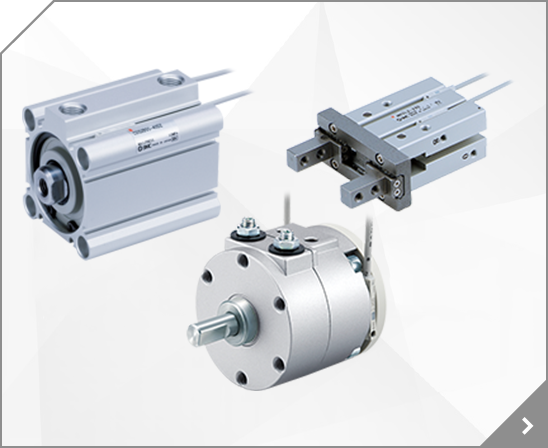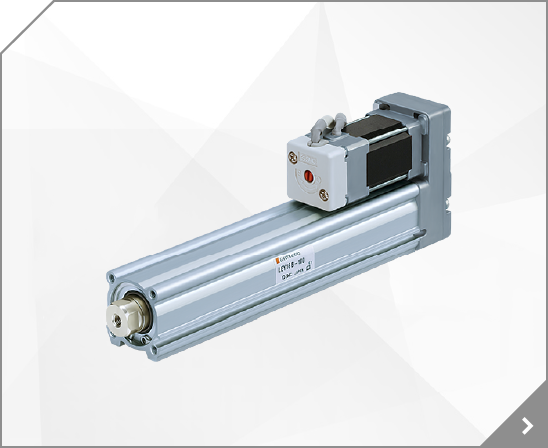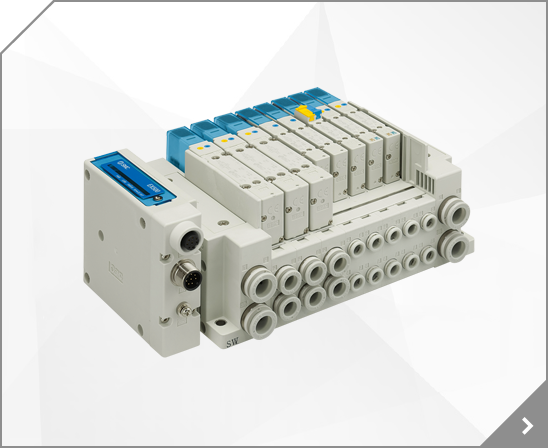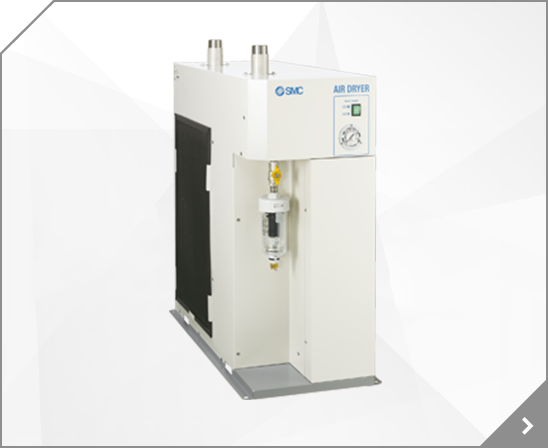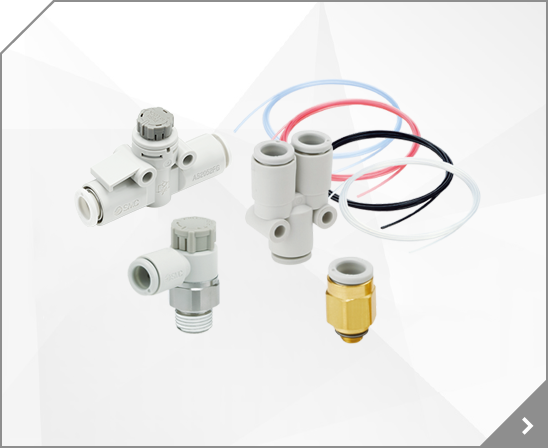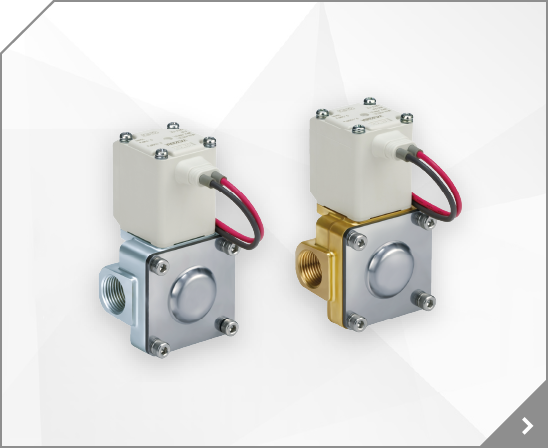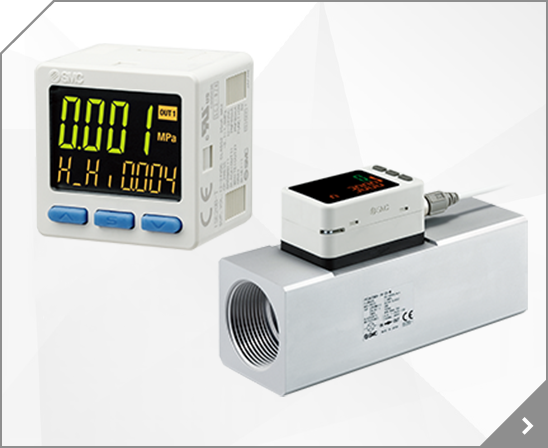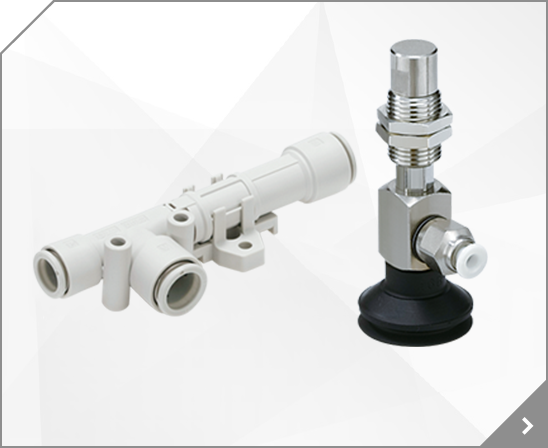
The MHZ2 series is a standard type parallel air gripper, taking the place of the MHQ*2 series. A linear guide provides high rigidity and high accuracy. MHZ2 can operate under higher pressure even at a larger holding point and overhang. High degree of mounting precision is achieved and mounting repeatability is improved.
The CE1 series is a stroke reading cylinder with position feedback. The home position can be anywhere within the cylinder stroke. Measurement is possible throughout the full stroke range.
The RQ series new air cushion construction allows this series to retain the merits of a compact cylinder. The unique air cushion construction eliminates the cushion ring used in conventional type air cushions, which reduces the overall length of the cylinder. The RQ series meets the demands for reduced shock, noise reduction and improved repeatability at the stroke end.
This is a legacy product. Please contact us for the latest version.sales@ocaire.com, CYL, ROTARY TABLE, ACTUATOR, MSQ ROTARY ACTUATOR W/TABLE, 1E, MSQ OTHER SIZE DBL ACT AUTO-SW, .21307 lb
SMC has redesigned the CQ2 compact cylinder with a new body, making it possible to mount auto switches on any of the 4 surfaces, depending on the installation conditions.
Standard strokes are available up to 2000mm with a 5000mm long stroke option on some bore sizes.Mechanical joint rodless cylinder with high precision guide, Bore sizes: 16, 20, 25, 32, 40 *, Strokes up to 1500mm depending upon bore size, With one or two stroke adjusters with or without shocks, Variety of switches and a variety of lead wire lengths, CYL, RODLESS, H/PRECISION, ACTUATOR,
Standard strokes are available up to 2000mm with a 5000mm long stroke option on some bore sizes.Mechanical joint rodless cylinder with high precision guide, Bore sizes: 16, 20, 25, 32, 40 *, Strokes up to 1500mm depending upon bore size, With one or two stroke adjusters with or without shocks, Variety of switches and a variety of lead wire lengths, CYL, RODLESS, H/PRECISION, ACTUATOR,
SMC has redesigned the CQ2 compact cylinder with a new body, making it possible to mount auto switches on any of the 4 surfaces, depending on the installation conditions.
SMC has redesigned the CQ2 compact cylinder with a new body, making it possible to mount auto switches on any of the 4 surfaces, depending on the installation conditions.
SMC has redesigned the CQ2 compact cylinder with a new body, making it possible to mount auto switches on any of the 4 surfaces, depending on the installation conditions.
Dimensions range from 3" X 4" X 2" to a maximum of 8" X 9.65" X 4.41". Single shaft end or double shaft end models are available.Standard type rotary actuator, 3 mounting types available, Single or double rod end available, Bores sizes: 50mm ~ 100mm, Auto switch capable, Actuator, Rotary, Rack & Pinion Type, ROTARY ACTUATOR, 511, 8.42600 lb
This is a legacy product. Please contact us for the latest version.sales@ocaire.com, CYLINDER, ACTUATOR, CG/CG3 ROUND BODY CYLINDER, ME, 40MM CG DBL-ACT AUTO-SW, 2.866 lb
Standard strokes are available up to 2000mm with a 5000mm long stroke option on some bore sizes.Mechanical joint rodless cylinder with high precision guide, Bore sizes: 16, 20, 25, 32, 40 *, Strokes up to 1500mm depending upon bore size, With one or two stroke adjusters with or without shocks, Variety of switches and a variety of lead wire lengths, CYL, RODLESS, H/PRECISION, ACTUATOR,
This is a legacy product. Please contact us for the latest version.sales@ocaire.com, CYLINDER, ACTUATOR, MLGP ONE-WAY LOCKING CYLINDER, MM, 40MM MLGP, 6.31072 lb
Conventional designed guided cylinders have a set bearing length resulting in dramatic decreases in side load capacity as stroke lengths increase. The MGP is the latest generation of guided cylinders and offers higher load capability, longer strokes, 2 port locations, switch mounting grooves on two sides, and a more versatile T-slot mounting than the MGQ series.
This is a legacy product. Please contact us for the latest version.sales@ocaire.com, CYL, RODLESS, H/PRECISION, ACTUATOR, MYC GUIDED CYLINDER, IE, 25MM MYC DBL-ACT AUTO-SW, 6.34677 lb
SMC has redesigned the CQ2 compact cylinder with a new body, making it possible to mount auto switches on any of the 4 surfaces, depending on the installation conditions.
This is a legacy product. Please contact us for the latest version.sales@ocaire.com, MB CYLINDER, ACTUATOR, MB TIE-ROD CYLINDER, LE, 32MM MB DBL-ACT AUTO-SW
Standard strokes are available up to 2000mm with a 5000mm long stroke option on some bore sizes.Mechanical joint rodless cylinder with cam follower guide, Bore sizes: 16, 20, 25, 32, 40, 50, 63 *, Strokes up to 5000mm depending upon bore size, With one or two stroke adjusters with or without shocks, Variety of switches and a variety of lead wire lengths, CYL, RODLESS, H/PRECISION, ACTUATOR
Magnetically coupled cylinders have a wide range of applications, and save mounting space. Loads and moments are possible through the use of integrated guides. A variety of guides can be used to achieve the necessary accuracy or allowable moment needed for your application. CY is available in 9 bore sizes, from 6mm to 63mm with standard stokes up to 1000mm.
